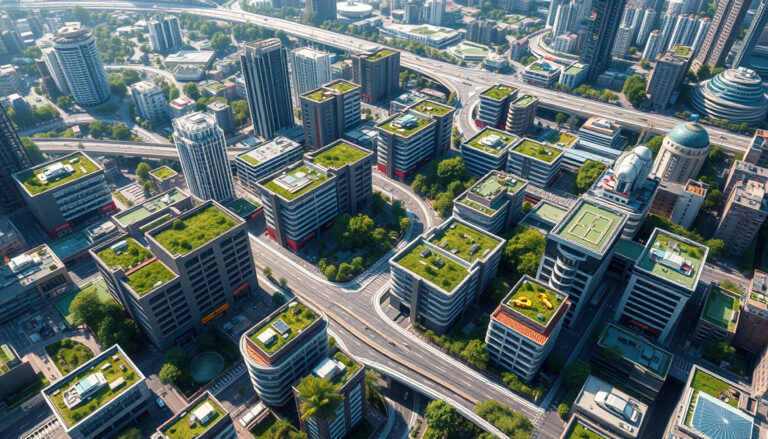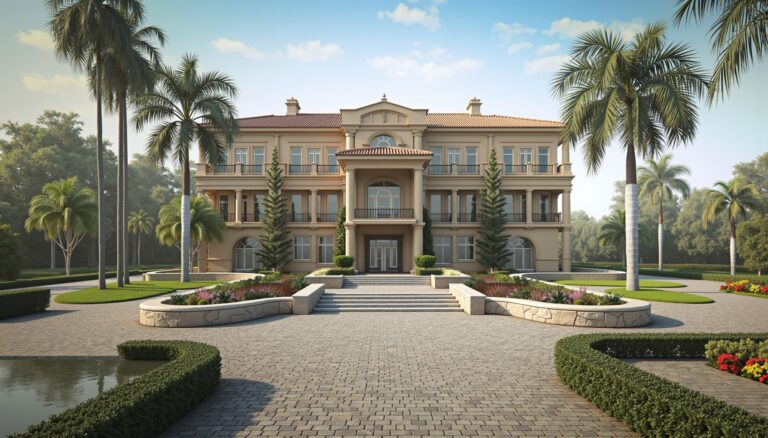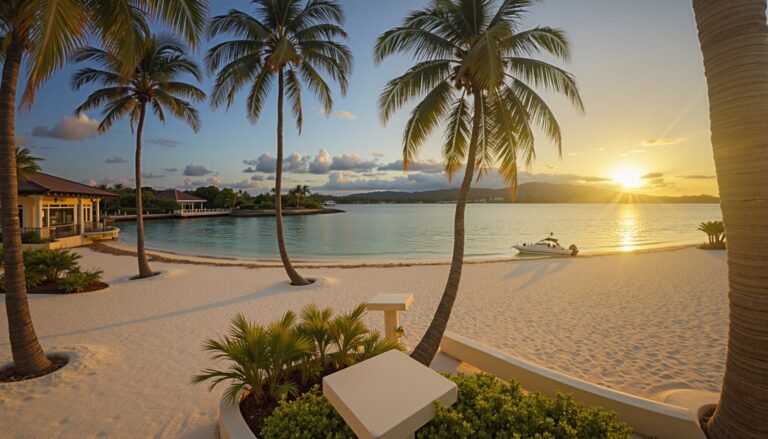As awareness of environmental issues continues to grow, so too does the demand for sustainable living solutions, with eco-friendly construction emerging as a cornerstone of this movement.
This innovative approach not only resonates with environmentally conscious consumers but also offers a host of benefits that go beyond just being good for the planet.
From reducing carbon footprints to enhancing energy efficiency, eco-friendly construction practices are transforming the landscape of modern building.
In this article, we will explore the core principles of eco-friendly construction, discuss its numerous benefits, highlight innovative materials and design strategies, showcase some successful projects, and delve into the challenges and future outlook of sustainable building practices.


Innovative Materials in Sustainable Building
The rise of eco-friendly construction has propelled the real estate market in Costa Rica, where developers are increasingly focusing on innovative materials that reduce environmental impact.
From bamboo and recycled plastics to sustainably sourced timber, these materials not only enhance the aesthetic appeal of properties but also contribute to energy efficiency and long-term sustainability.
This shift towards sustainable building is particularly important in Costa Rica, a country renowned for its rich biodiversity and fragile ecosystems.
By utilizing eco-friendly materials, developers are not only meeting the demands of ecologically conscious buyers but also aligning with the nation’s commitment to conservation and green living.
In essence, Costa Rica’s real estate market is at the forefront of a global movement that embraces sustainability while offering modern luxuries, making it an attractive option for investors who prioritize environmental responsibility.
Energy-Efficient Design Strategies
Energy-efficient design strategies are essential for creating sustainable buildings that minimize environmental impact, making them a top choice in today’s real estate market.
By incorporating eco-friendly construction techniques, homeowners and builders can significantly reduce energy consumption and greenhouse gas emissions.
Effective strategies include optimizing natural lighting through the placement of windows and skylights, using energy-efficient insulation to regulate temperature, and selecting renewable materials that not only enhance the aesthetic appeal but also contribute to sustainability.
Furthermore, integrating smart technology can facilitate energy management, allowing residents to monitor and control their usage effectively.
As consumers become increasingly conscious about their environmental footprint, properties that emphasize energy efficiency through eco-friendly construction are not just better for the planet – they also offer long-term financial savings, making them a wise investment for the future.

Case Studies of Successful Eco-Friendly Projects
In recent years, eco-friendly construction has gained momentum as a vital aspect of sustainable development, especially in regions known for their breathtaking natural beauty, such as Costa Rica.
One noteworthy case study is the development of a sustainable community in the Nicoya Peninsula, where builders utilized local materials and innovative techniques to minimize the ecological footprint.
This project features solar panels, rainwater harvesting systems, and natural ventilation to reduce energy consumption.
Another exemplary project can be seen in the Central Valley, where a luxury villa was constructed using bamboo—an abundant, renewable resource.
The incorporation of energy-efficient appliances and xeriscaping not only lowered utility costs but also kept the stunning views of the surrounding mountains in focus.
These successful projects underscore the importance of eco-friendly construction in preserving Costa Rica’s rich biodiversity while catering to the growing demand for sustainable living options.
Challenges and the Future of Eco-Friendly Construction
Eco-friendly construction has gained significant momentum in recent years, driven by the need for sustainable development and a growing awareness of environmental issues.
However, the path to widespread adoption is riddled with challenges.
One major hurdle is the higher upfront costs associated with green materials and technology, which can deter investors and homeowners alike.
Additionally, a lack of skilled labor knowledgeable in eco-friendly construction techniques can slow progress.
Regulatory barriers and outdated building codes further complicate the landscape, making it difficult for builders to innovate.
Despite these challenges, the future of eco-friendly construction looks promising as more governments implement incentives for sustainable practices and public awareness of environmental issues increases.
With evolving technology and a push towards sustainable living, the construction industry is likely to see a significant shift towards eco-friendly building practices, ultimately benefiting the planet and future generations.
Frequently Asked Questions
What is eco-friendly construction?
Eco-friendly construction refers to building practices that aim to reduce the environmental impact of construction activities by using sustainable materials, minimizing waste, and utilizing energy-efficient designs.
What are the benefits of eco-friendly construction practices?
The benefits of eco-friendly construction include reduced energy costs, improved indoor air quality, lower environmental impact, and enhanced property value, among others.
What innovative materials are used in sustainable building?
Innovative materials used in sustainable building include recycled steel, bamboo, rammed earth, and low-VOC paints and finishes, all designed to reduce environmental impact.
How do energy-efficient design strategies contribute to eco-friendly construction?
Energy-efficient design strategies contribute by optimizing natural light, improving insulation, using renewable energy sources, and minimizing reliance on non-renewable resources, which all lead to lower energy consumption.
What are some challenges faced in adopting eco-friendly construction practices?
Challenges include higher initial costs, lack of awareness or knowledge among builders and contractors, regulatory hurdles, and the need for new skills and technologies in the construction industry.





